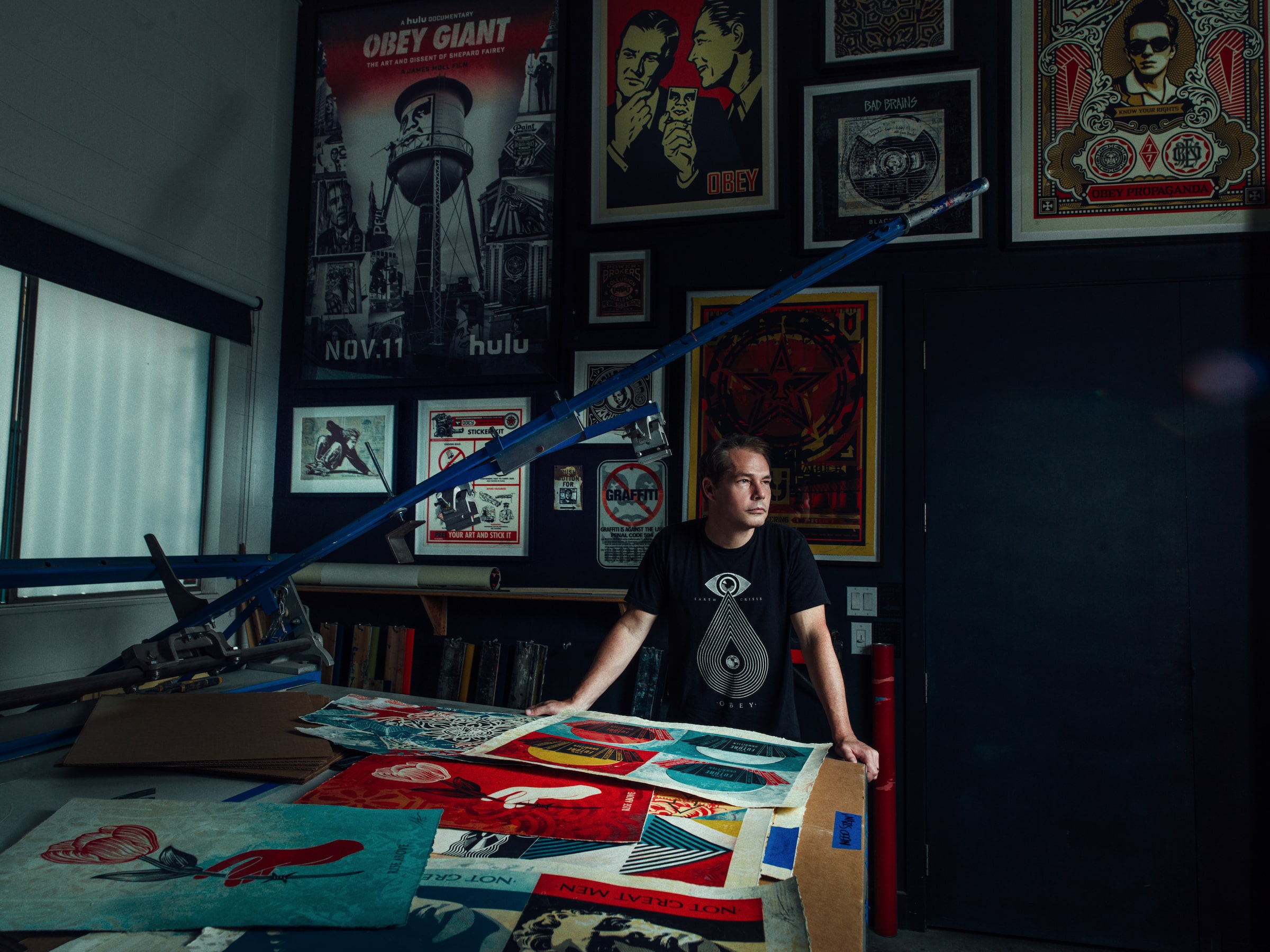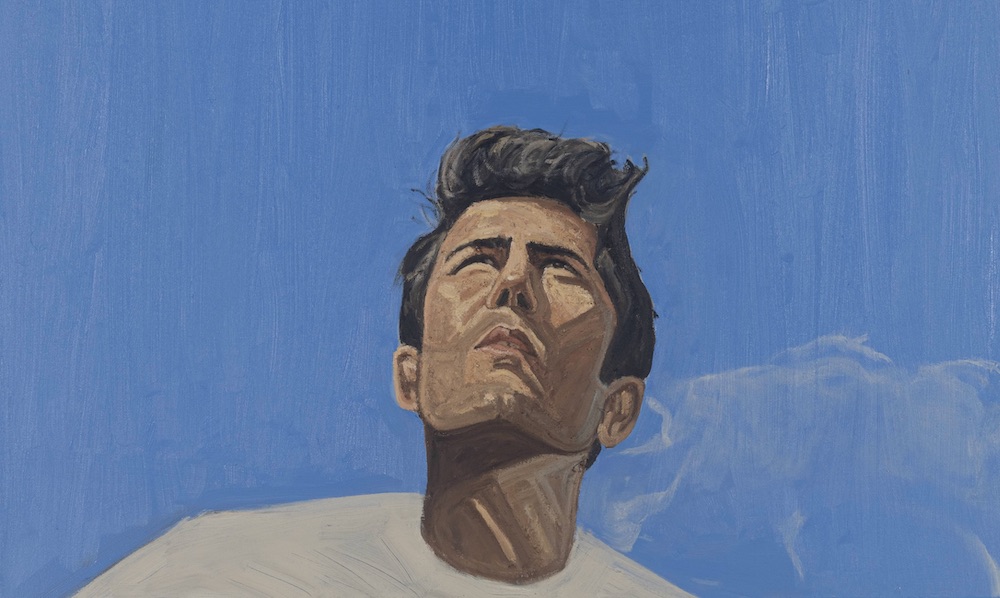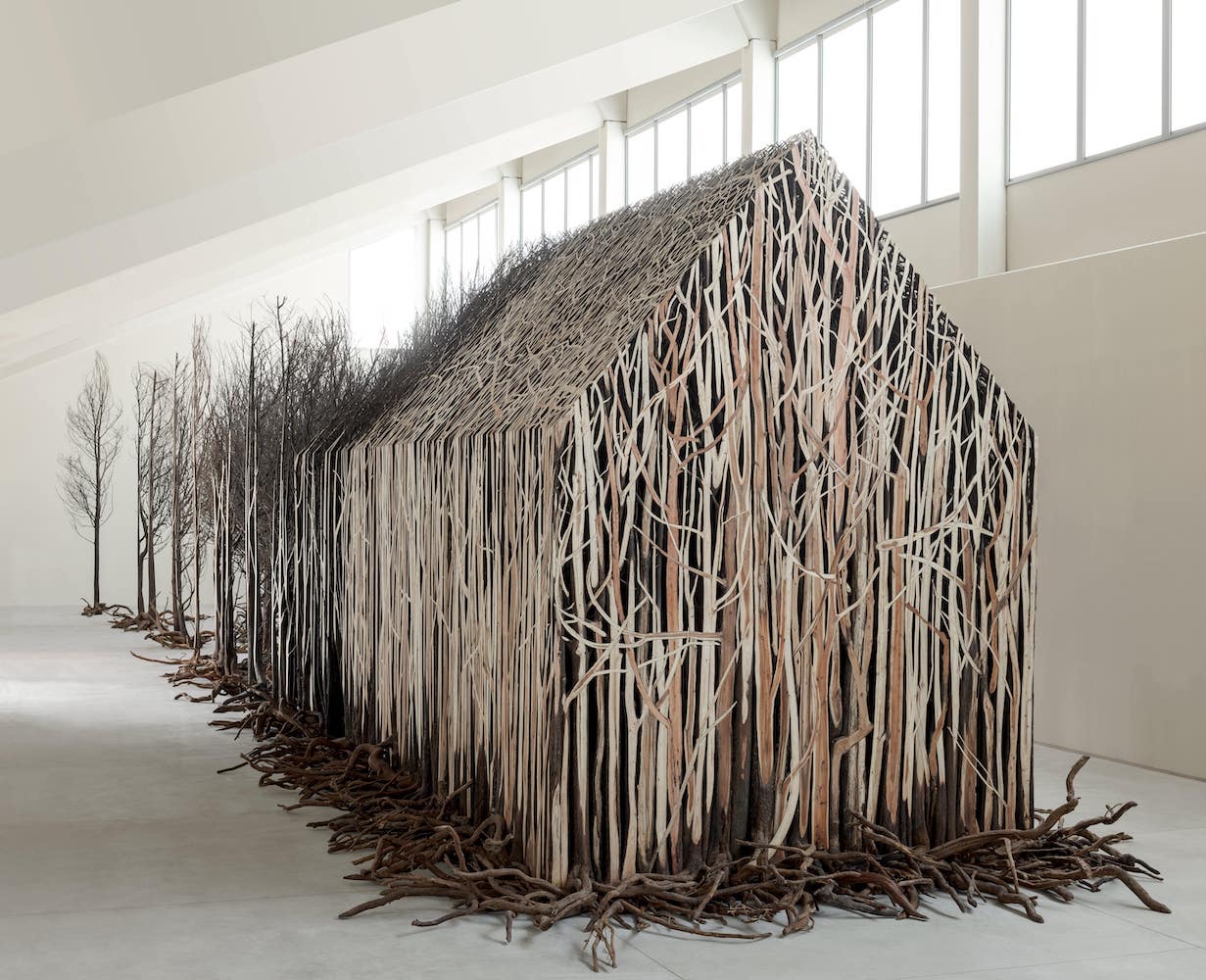The Los Angeles-based artist discusses finding success a little later in life and how she’s come to make art for the pure joy of it.
Patricia Iglesias Peco’s mesmerizing “Naturaleza Viva” was on view last fall at François Ghebaly in Los Angeles. It was the L.A.-based, Argentine artist’s first solo show with the gallery, and it featured new paintings bursting with florals in various states of animation. These interpretations of flowers couldn’t be farther from still lifes. They explode with energy and movement, saturated strokes of pigment, against linen backdrops that make petals, stalks, and leaves dance. Themes of mortality, vitality, and sexuality vibrate on their surface.
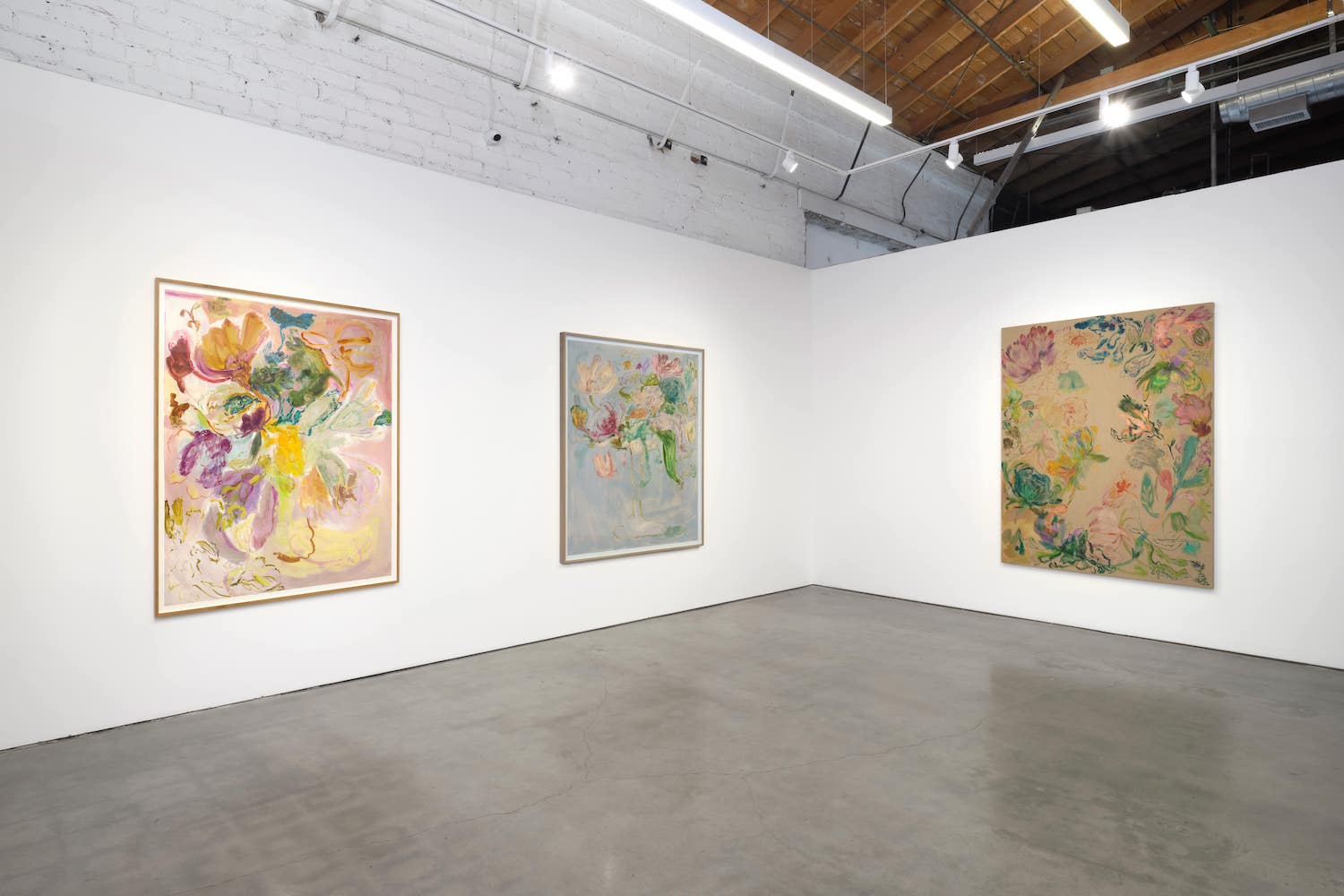
Installation view of “Patricia Iglesias Peco: Naturaleza Viva” (2022) at François Ghebaly, Los Angeles, CA, photo by Paul Salveson, courtesy of the artist and François Ghebaly, Los Angeles.
Iglesias Peco moved to Los Angeles from New York, where she’d lived for most of her adult life, just before the pandemic hit. Despite its hardships, the fresh start in a new city and the outdoor space that came with her home offered an oasis. She started painting animals inspired by seeing sea lions back in Buenos Aires, dolphins in Venice, and monkeys in the streets of India as a result of the lockdowns. She posted those to Instagram and they started gaining a lot of attention. They were full of joy, something we all needed. In her late forties, having always made and shown art but still feeling very much like an underdog, she found her work hanging next to an idol, Cecily Brown, at Gladstone Gallery in a group show.
Whitewall spoke with Iglesias Peco about finding success a little later in life and connecting with the childlike sensibility of making art for fun.
WHITEWALL: What was the starting point for your recent show, “Naturaleza Viva”?
PATRICIA IGLESIAS PECO: We were going on hikes in Los Angeles, and I had never seen nature like I saw here. I was very close to the Huntington Botanical Gardens, so I got a membership and we were going every week. It was something really special.
Surrounded by that, I started reading about Dutch still life. I was really interested in that, but then I was investigating a little bit about flowers. I read this incredible essay with Jamieson Webster on flowers, and a lot of things made sense. I started seeing the flowers as aggressive, provocative, in a state of arousal. And I loved that. I feel like my flowers are really out of control. They are not able to be contained. They are very, very much alive. They have secret intentions.
Because my background is in sculpture, I think the work is visceral. The way I paint is very gestural, and it comes from a sculptural point of view. I almost carve with a brush. I’m adding and I’m subtracting.
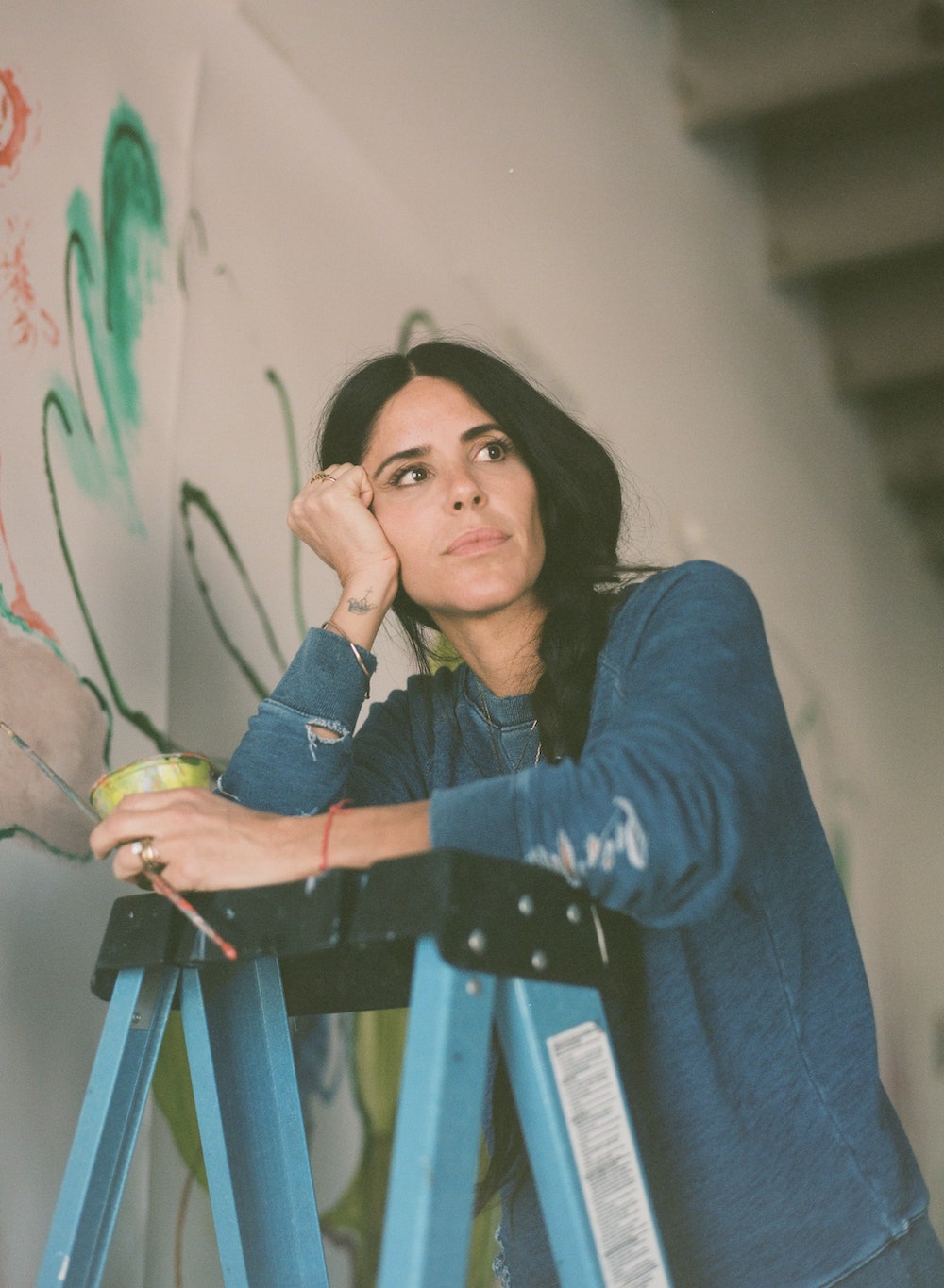
Patricia Iglesias Peco, portrait by Angi Welsch.
WW: There’s so much texture and movement to the paintings. And especially in the ones on linen. Can you tell us about that choice of material?
PIP: It has a different time, meaning, the gesture becomes different. The way that I work is very chaotic. I go where it itches and I scratch there. I work on a lot of things at the same time, so at the same time as the animals I was doing the landscapes and I was doing flowers. I move where I feel that need.
It’s the same with material. It’s almost like one huge painting—all of these paintings that I’ve done. I feel like all of them are just one big one that is divided. For me, there’s always a thread that links them. Being able to experiment with material absolutely is what excites me—because things react in a different way. I think, because of that, it pushes me to see what I can do and what can happen when the gesture becomes more contained, because linen is a completely different animal. So I had the canvas, I had the linen, I had the paper, and I had the wood, and I like that. I like the fact that it really makes you talk in a different way.
“I just want to go to my studio and I want to have fun and paint and see what comes out.” — Patricia Iglesias Peco
WW: Are there conscious choices on subjects when you start a new series? Are flowers still serving you in terms of creative output?
PIP: I think it does because I think they are morphing. The last painting that I did almost looks like a landscape. They keep on morphing, these flowers, and I don’t know where they will go. To me, nothing is really forced. It’s about maybe something that I read, something that I see, something that I go through. Everything resolves while I’m painting. It starts with color. If you are asking me where it starts, it’s an idea of a color. And there is the motor.
I’m 48. You see kids doing shows very early in their twenties, thirties, so this is coming late in my life. I’m very grateful, but I don’t want to forget the fact that the most important thing to me is to be in the studio painting, and just keep on playing and having fun and experimenting.
I don’t have a lot of my work. I collect outsider art and I collect children’s art, those are my biggest loves and influences—children, how they paint, there’s no doubt. It’s incredible.
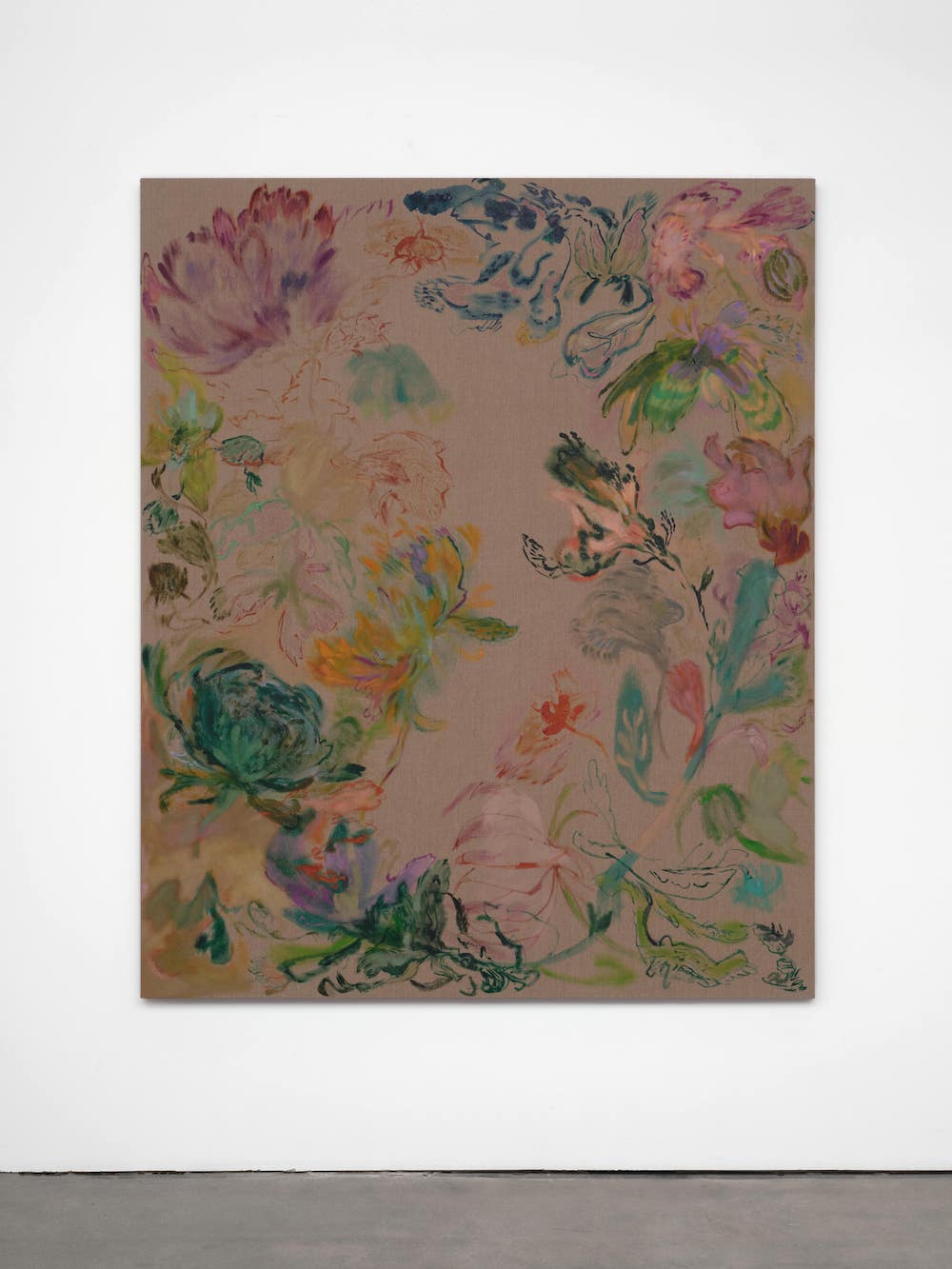
Patricia Iglesias Peco, “El Lenguage de las Flores,” 2022, Oil and dye on linen, 73 x 60 inches, photo by Paul Salveson, courtesy of the artist and François Ghebaly, Los Angeles.
WW: It is! There’s no second-guessing.
PIP: They grab the brush, they grab the colors, and that’s it. That’s the thing—it’s innate. We lose it.
I did a mural at my sister’s house in Buenos Aires, and my nephew is nine. He sat there in a chair while I was painting and then he was telling me all of these things that he was seeing. It was giving me goosebumps because I couldn’t have seen the things if he hadn’t told me what he was seeing. I was like, this is what it needs to be. It needs to be felt.
Why is it that when I was five I wanted to be a painter? Because already then I knew. So why? Because of the joy of making things with your hands and painting and experimenting. So I think that is the first thing. This can come and go. People can be up in a gallery and you can be not in a gallery. And it’s funny because I thought about it. I thought about what it meant. Did it mean that my work was good or not good before, or that it’s good now? It doesn’t mean anything. I just want to go to my studio and I want to have fun and paint and see what comes out.

Patricia Iglesias Peco, “Modern Nature I,” 2022, Oil on fiber, 60 x 50.5 inches, photo by Paul Salveson, courtesy of the artist and François Ghebaly, Los Angeles.




